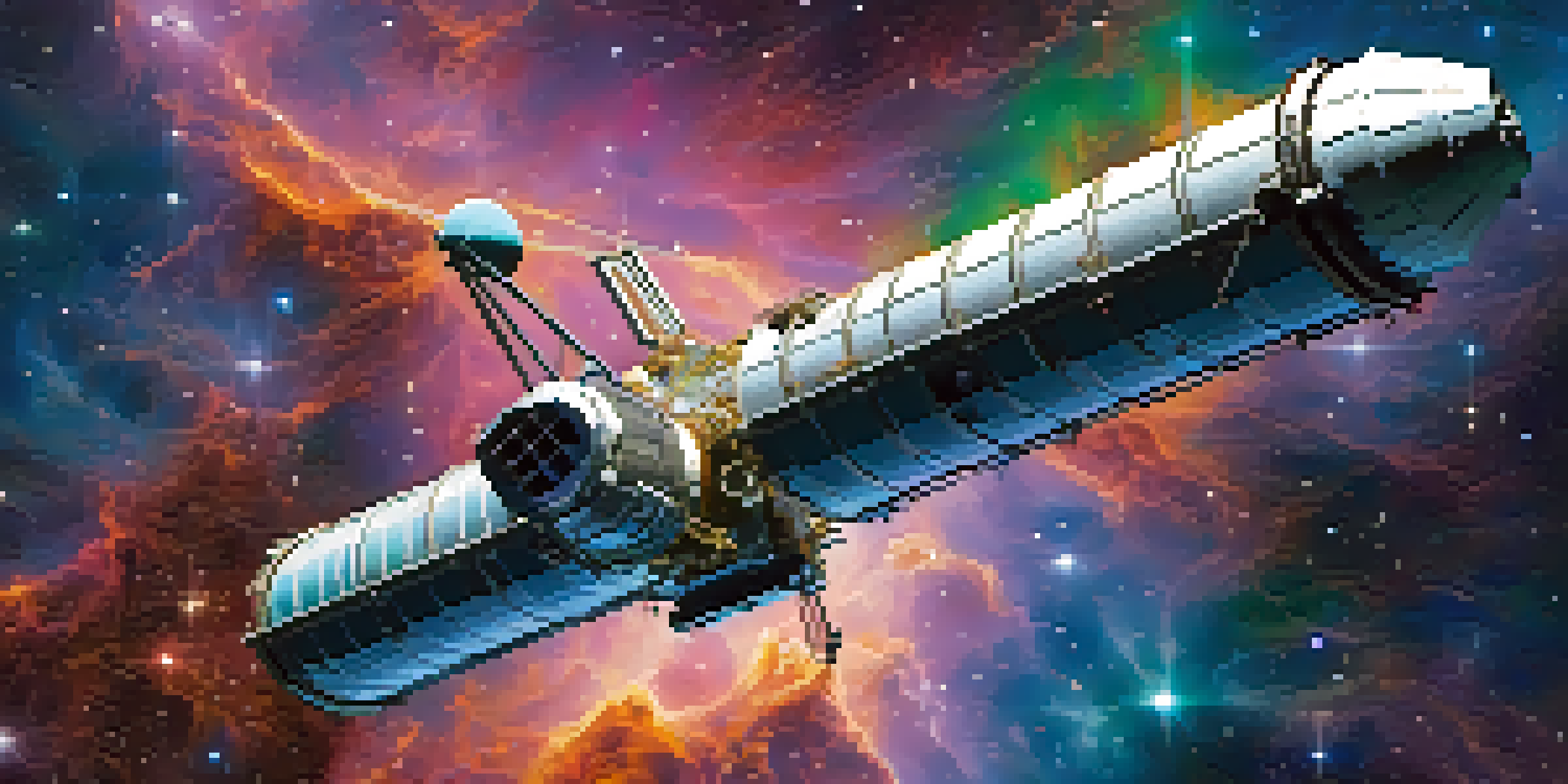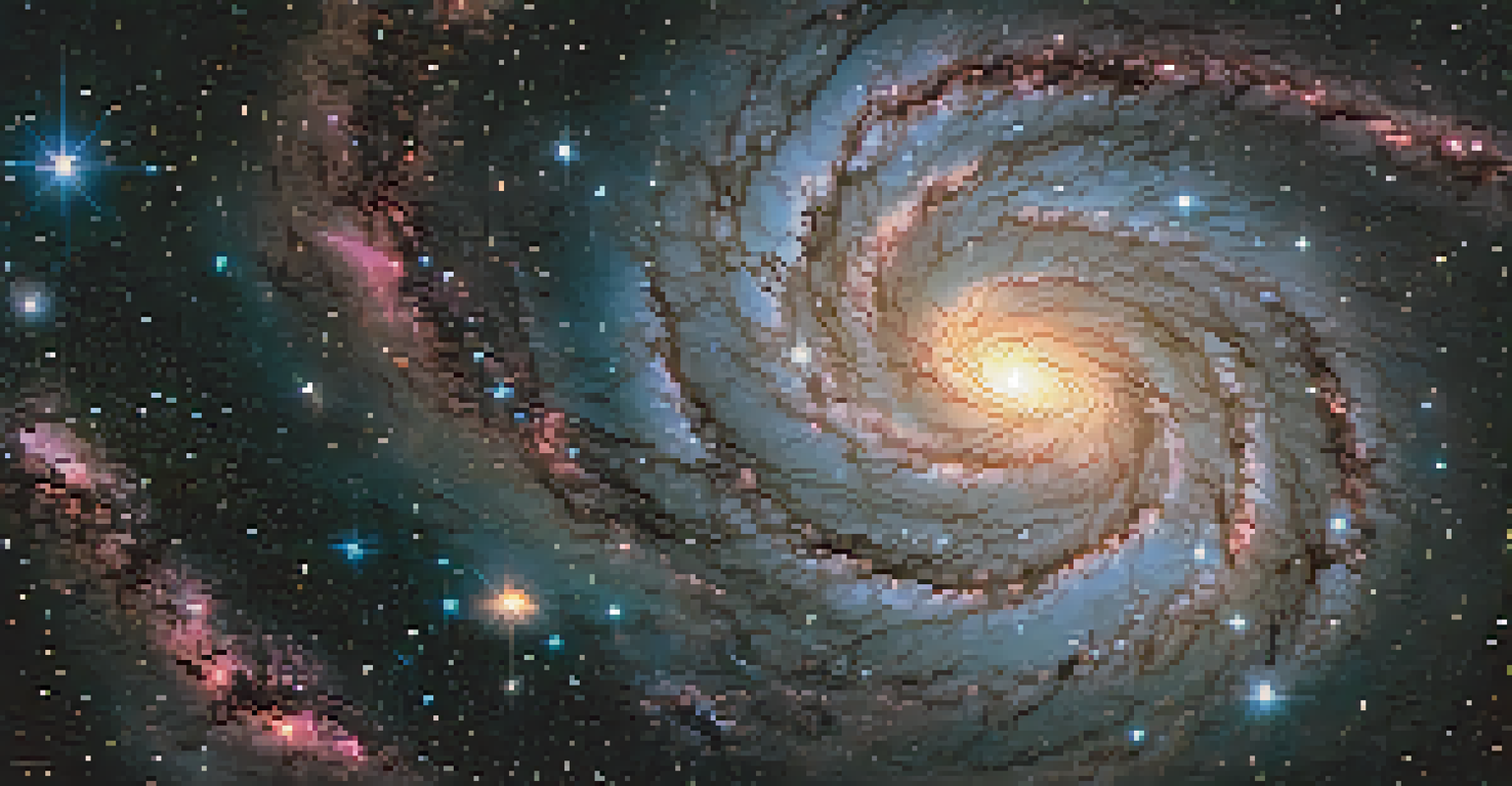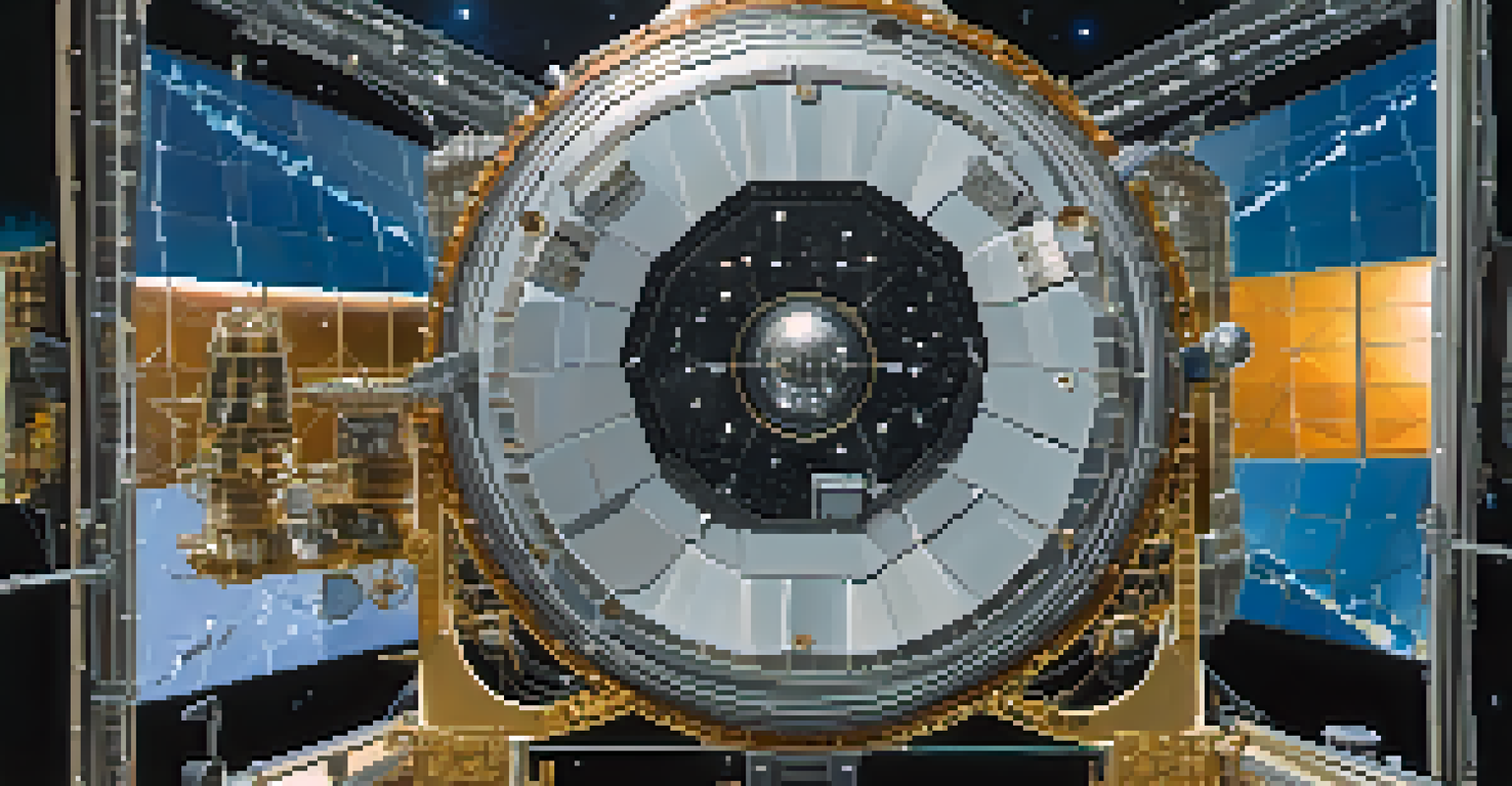The Hubble Space Telescope: A Window to the Universe

What is the Hubble Space Telescope and Its Importance?
The Hubble Space Telescope (HST) is a marvel of modern science, launched in 1990. It orbits Earth and captures stunning images of distant galaxies, nebulae, and other celestial phenomena. By avoiding the blurring effects of Earth's atmosphere, Hubble provides clear and detailed views of the universe, allowing scientists to gather valuable data.
The Hubble Space Telescope has opened up new vistas in our understanding of the universe, allowing us to observe phenomena that were once beyond our reach.
Hubble’s contribution to astronomy is immense, helping to answer fundamental questions about the cosmos. It has played a key role in discovering the rate of expansion of the universe and determining the existence of dark energy. With its ability to observe light from the earliest galaxies, Hubble has reshaped our understanding of cosmic history.
Overall, the HST serves as a vital tool for astronomers, educators, and enthusiasts alike. It has ignited public interest in space exploration and inspired countless individuals to learn more about our universe. The telescope is not just a piece of equipment; it is a gateway to the wonders that lie beyond our planet.
Key Discoveries Made by Hubble
Hubble has made numerous groundbreaking discoveries that have expanded our knowledge of the universe. For instance, it helped determine the age of the universe by observing distant supernovae, leading to the conclusion that the universe is approximately 13.8 billion years old. This revelation has significant implications for our understanding of astrophysics.

Another landmark achievement was the identification of exoplanets, or planets outside our solar system. Hubble’s observations have contributed to the discovery of thousands of exoplanets, some of which may have conditions suitable for life. This continues to fuel the age-old question: Are we alone in the universe?
Hubble's Cosmic Contributions
The Hubble Space Telescope has fundamentally changed our understanding of the universe by providing clear images and data that have led to key discoveries, such as the age of the universe and the existence of dark energy.
In addition, Hubble has captured breathtaking images of cosmic phenomena, such as the Pillars of Creation in the Eagle Nebula. These stunning visuals not only enhance our appreciation for the beauty of the universe but also serve as valuable tools for scientific research, allowing scientists to study star formation and other processes.
The Technology Behind Hubble's Success
At the heart of Hubble's capabilities are its sophisticated instruments and technology. The telescope is equipped with a primary mirror that measures 2.4 meters in diameter, which allows it to collect light from faint astronomical objects. This mirror, along with advanced cameras and spectrographs, enables Hubble to capture images in various wavelengths, from ultraviolet to near-infrared.
We are made of star-stuff. Our atoms are traceable to the stars that exploded and created the elements that make up our bodies.
Hubble's design also incorporates innovative features like gyroscopes and reaction wheels, which help maintain its precise orientation in space. This stability is crucial for taking long-exposure images, as it minimizes blurriness caused by movement. The telescope's ability to point accurately at targets for extended periods is one of the reasons for its exceptional image quality.
Moreover, Hubble is continually updated with new instruments and technology to enhance its capabilities. This adaptability has allowed it to stay relevant in the rapidly evolving field of astronomy. Each upgrade ensures that Hubble remains at the forefront of cosmic exploration, pushing the boundaries of what we can learn about the universe.
Hubble’s Role in Astrobiology
Astrobiology, the study of life in the universe, has greatly benefited from Hubble's observations. By studying the atmospheres of exoplanets, Hubble has provided insights into their potential habitability. This includes detecting key elements like water vapor and carbon dioxide, which are essential for life as we know it.
Additionally, Hubble's observations of distant galaxies and star-forming regions help scientists understand the conditions necessary for life to emerge. By examining how stars and planets form, researchers can piece together the puzzle of how life might develop beyond Earth. This has sparked interest in missions aimed at finding signs of life on other planets.
Innovative Technology and Updates
Equipped with advanced instruments and continually updated technology, Hubble maintains its status as a leading tool in astronomy, allowing for precise observations and long-exposure imaging.
Hubble's contributions to astrobiology exemplify the interconnectedness of different fields of study. By merging astronomy with biology, Hubble has opened new avenues for understanding the universe and our place within it. Its discoveries continue to inspire scientists to explore the possibility of life beyond our solar system.
Collaborations and Future Endeavors
Hubble's success is not just due to its advanced technology; it's also the result of global collaboration among scientists and researchers. Teams from NASA, the European Space Agency, and various universities have worked together to maximize Hubble's potential. This spirit of cooperation has led to significant advancements in our understanding of the cosmos.
Looking ahead, Hubble will continue to work alongside the James Webb Space Telescope, which is set to launch new missions focused on different aspects of cosmic discovery. While Hubble observes the universe in visible and ultraviolet light, Webb will explore infrared wavelengths, allowing for complementary studies that enhance our overall knowledge.
The future of space exploration is bright, with Hubble leading the way as a pioneer in its field. Its legacy will undoubtedly influence upcoming generations of astronomers and scientists, inspiring them to push the limits of what is possible in understanding the universe.
Public Engagement and Education Through Hubble
One of Hubble’s most impactful aspects is its role in public engagement and education. The stunning images captured by the telescope have captivated millions, sparking interest in astronomy and science. Hubble's website and social media channels regularly share these breathtaking visuals, making the wonders of the universe accessible to everyone.
Educational programs leveraging Hubble's discoveries have been developed to inspire students and educators alike. From classroom materials to interactive workshops, these initiatives aim to foster a love for science and exploration. By connecting students with real-world astronomy, Hubble acts as a bridge between complex scientific concepts and everyday understanding.
Inspiring Future Generations
Hubble's stunning visuals and educational programs engage the public and inspire young minds to explore careers in science, technology, engineering, and mathematics (STEM).
This engagement not only enriches public knowledge but also encourages the next generation of scientists. When young people see the beauty and significance of Hubble’s work, they may feel inspired to pursue careers in science, technology, engineering, and mathematics (STEM). In this way, Hubble serves as a catalyst for the future of scientific exploration.
Challenges and Triumphs of Hubble's Mission
Like any groundbreaking project, Hubble has faced its fair share of challenges. Shortly after its launch, a significant flaw was discovered in its primary mirror, which affected the clarity of its images. However, instead of abandoning the mission, NASA launched a series of servicing missions to correct the issue, showcasing resilience and innovation.
These servicing missions not only fixed the initial problems but also upgraded Hubble’s instruments, extending its operational life. Astronauts aboard the Space Shuttle made history by performing delicate repairs and enhancements in orbit, demonstrating the incredible synergy between human ingenuity and technology. This commitment to maintaining Hubble's functionality has led to decades of successful operations.

Today, Hubble stands as a testament to perseverance and the pursuit of knowledge. Despite the obstacles it has encountered, the telescope continues to provide invaluable insights into the universe. Its legacy of triumph over adversity serves as an inspiration for future scientific endeavors.